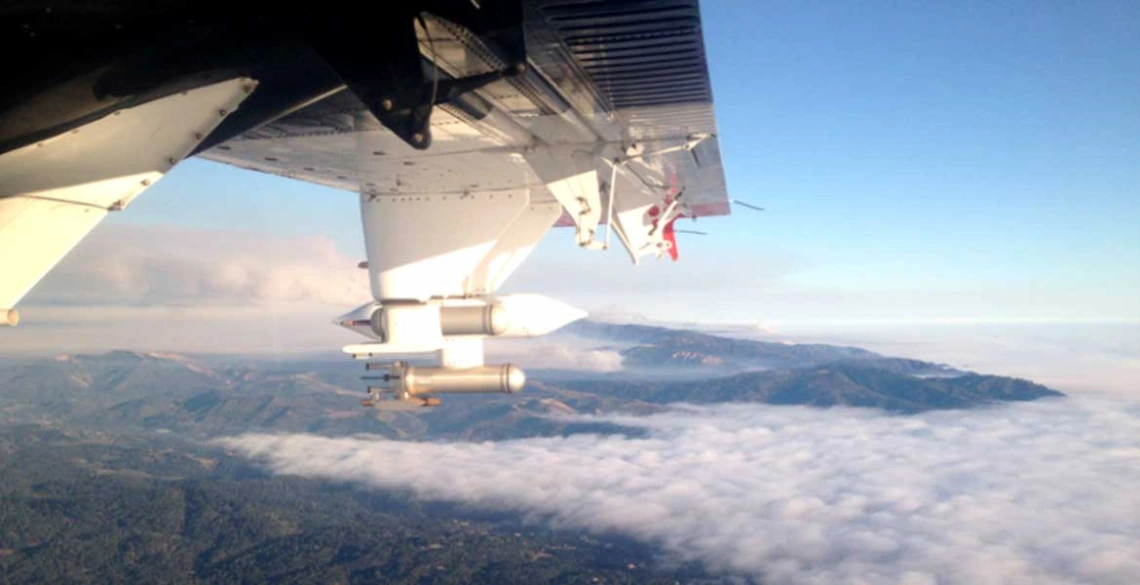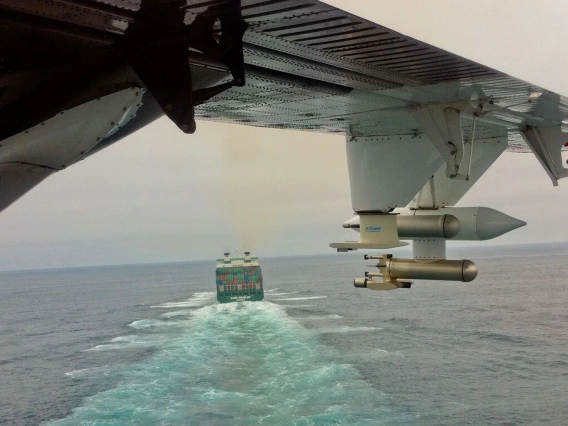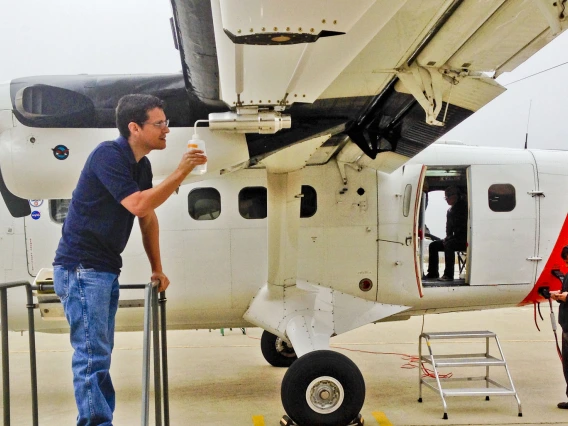Probing Wildfire Smoke Plumes Up Close
Using data collected by planes flying directly through clouds of wildfire smoke, a team of UA researchers is investigating the impact of aerosols on the weather and public health.

A view of a California wildfire taken from the Twin Otter turboprop that collected the data reported in a new study and is operated by the Center for Interdisciplinary Remotely-Piloted Aircraft Studies at the Naval Postgraduate School in Monterey, California. (Image: Ali Hossein Mardi)
The western United States is getting hotter and drier, boosting concerns about wildfire emissions. Wildfire plumes consist of tiny particles known as aerosols, which are emitted when organic matter such as brush or trees burns. Once in the atmosphere, aerosols can impact sunlight absorption, weather and public health.
To better understand these effects, a team of researchers, including University of Arizona graduate students Ali Hossein Mardi, Hossein Dadashazar, Alexander B. MacDonald and Rachel A. Braun, as well as UA chemical and environmental engineering professor Armin Sorooshian, are interested in the composition, structure and evolution of wildfire aerosol plumes. Until now, most knowledge of these plumes has come from satellites and other remote data. But a new study, for which Mardi is first author, illuminates the properties of plumes using data from aircraft that flew straight through them.
The research team analyzed data collected aboard a research aircraft in coastal California during the summers of 2013 and 2016. In 81 out of 231 total sounding measurements, the airplane flew straight through aerosol plumes of several wildfires, including the Douglas Complex fires in southern Oregon and the costly Soberanes fire near Big Sur in California.



